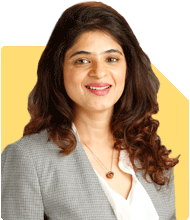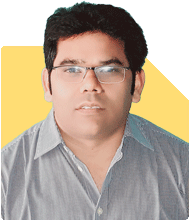How to reach 1cr corpus in 15 years with combined income of 84k?
Ramalingam Kalirajan |8452 Answers |Ask -Follow
Mutual Funds, Financial Planning Expert - Answered on Jul 30, 2024
He has an MBA in finance from the University of Madras and is a certified financial planner.
He is the director and chief financial planner at Holistic Investment, a Chennai-based firm that offers financial planning and wealth management advice.... more

Me n my wife are in gvt service having monthly salary of 40k n 44k. Age 35y n 33y . Want to achive 1cr corpus in 15yr. Savings in mF sip 13k since 1yr, PPF 2k since 5yr, GPF 9k since 4yr. LIC 4k since 6yr Plan to take home loan 25l for 20yr. Please do help to achive my goal. All saving are together we do and have loang term goal.
Monthly Salary: Rs 40,000 (User), Rs 44,000 (Spouse)
Age: 35 years (User), 33 years (Spouse)
Investments:
MF SIP: Rs 13,000/month (since 1 year)
PPF: Rs 2,000/month (since 5 years)
GPF: Rs 9,000/month (since 4 years)
LIC: Rs 4,000/month (since 6 years)
Planned Home Loan: Rs 25 lakhs for 20 years
Goal: Achieve Rs 1 crore corpus in 15 years
Appreciating Your Commitment
You have done well by starting your savings early. Your systematic approach to investing in SIPs, PPF, GPF, and LIC shows a strong commitment to securing your financial future.
Assessment and Insights
Achieving Rs 1 crore in 15 years requires a well-balanced and disciplined approach. Let's evaluate each of your current investments and suggest ways to enhance your savings strategy.
Investment Strategy
Mutual Fund SIPs
Advantage: SIPs are great for long-term growth. They benefit from rupee cost averaging and compounding.
Recommendation: Continue and increase your SIPs as your income grows. Prefer actively managed funds over index funds for better returns.
Disadvantage of Index Funds: They track the market and may not outperform during volatile periods.
Public Provident Fund (PPF)
Advantage: PPF is a safe, tax-efficient investment with decent returns.
Recommendation: Consider increasing your PPF contributions, especially towards the end of the financial year to maximize the benefits.
General Provident Fund (GPF)
Advantage: GPF provides guaranteed returns and is risk-free.
Recommendation: Continue your contributions. It's a good part of your portfolio.
Life Insurance Policy (LIC)
Advantage: Provides a safety net for your family.
Recommendation: Ensure your policy is providing adequate coverage. Review the returns and consider redirecting some premiums to mutual funds if returns are low.
Home Loan Consideration
Home Loan: Rs 25 lakhs for 20 years
Impact: Your EMI will be a significant expense. Ensure your investments still meet your goals after accounting for EMI payments.
Additional Recommendations
Increase SIP Contributions
Gradually increase your SIP contributions with salary hikes. This helps in achieving a larger corpus due to compounding.
Diversify Investments
Diversify your investments across various asset classes to balance risk and returns.
Education Fund for Children
Start a separate SIP for your children's education. This ensures dedicated savings for their future needs.
Long-term Goal Planning
Review Regularly: Monitor and review your portfolio annually. Adjust investments based on performance and life changes.
Professional Guidance: Consult a Certified Financial Planner to tailor a plan specific to your evolving needs.
Final Insights
Achieving a Rs 1 crore corpus in 15 years is ambitious but possible with disciplined savings and smart investing. Focus on increasing your SIPs, maximizing tax-efficient investments like PPF, and managing your home loan effectively.
Best Regards,
K. Ramalingam, MBA, CFP
Chief Financial Planner
www.holisticinvestment.in
Best Regards,
K. Ramalingam, MBA, CFP,
Chief Financial Planner,
www.holisticinvestment.in
Let's embark on this financial journey together.
You can reach me through my website mentioned below.
This platform has restrictions on sharing personal contact. Hope you understand.
Best Regards,
K. Ramalingam, MBA, CFP,
Chief Financial Planner,
www.holisticinvestment.in
You may like to see similar questions and answers below
Ramalingam Kalirajan |8452 Answers |Ask -Follow
Mutual Funds, Financial Planning Expert - Answered on Jun 25, 2024
Ramalingam Kalirajan |8452 Answers |Ask -Follow
Mutual Funds, Financial Planning Expert - Answered on Aug 21, 2024
Ramalingam Kalirajan |8452 Answers |Ask -Follow
Mutual Funds, Financial Planning Expert - Answered on Jul 31, 2024
Mihir Tanna |1054 Answers |Ask -Follow
Tax Expert - Answered on May 16, 2025
Ashwini Dasgupta |105 Answers |Ask -Follow
Personality Development Expert, Career Coach - Answered on May 16, 2025
Onkar Singh |27 Answers |Ask -Follow
Career Management, Skills Development Expert - Answered on May 16, 2025
Ramalingam Kalirajan |8452 Answers |Ask -Follow
Mutual Funds, Financial Planning Expert - Answered on May 16, 2025
Nayagam P P |4535 Answers |Ask -Follow
Career Counsellor - Answered on May 16, 2025
Ramalingam Kalirajan |8452 Answers |Ask -Follow
Mutual Funds, Financial Planning Expert - Answered on May 16, 2025
Ramalingam Kalirajan |8452 Answers |Ask -Follow
Mutual Funds, Financial Planning Expert - Answered on May 16, 2025
Nayagam P P |4535 Answers |Ask -Follow
Career Counsellor - Answered on May 16, 2025
Nayagam P P |4535 Answers |Ask -Follow
Career Counsellor - Answered on May 16, 2025
Nayagam P P |4535 Answers |Ask -Follow
Career Counsellor - Answered on May 16, 2025























